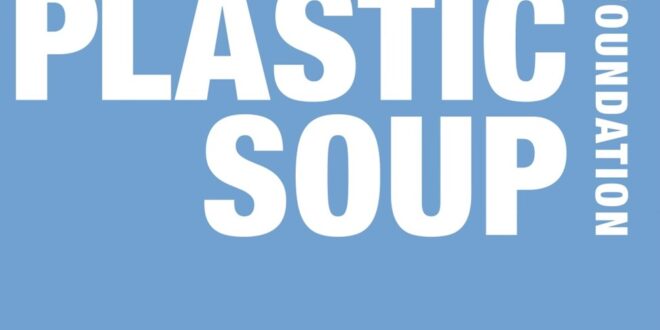Is fast fashion making us sick?
Written by
Hossam Badrawi
Quoted from a report
“Plastic Soup Foundation”.
Do our clothes make us sick? Scientific evidence is accumulating; Plastic emissions from our clothes are a cause for serious concern. It is almost practical to avoid exposure to microplastic fibers in our daily lives, and removing these polluting fibers from the environment is not feasible, as the loss of microplastic fibers causes irreversible pollution.
About 70% of the clothing manufactured by fashion brands and most of the upholstery on sofas, zavix and carpets are made of synthetic materials (polyester, nylon, acrylic). When these items are made, used or washed, they release microplastic fibers into the air we breathe and deposit into the water and food we drink and eat. The release of these microplastic fibers is just a new addition to the list of environmental impacts, and the question is whether microplastic fibers have an impact on human health. Does fast fashion make us sick?
Scientific evidence that micro- and nanoplastics (mnps) pose a health risk to all life on Earth is accumulating rapidly, with nearly 400 publications in 2021 and 2022 on “microplastics” and “health.” Microplastic (or synthetic) fibers are everywhere. Exterior and interior dust contain microplastic fibers, and indoor environments contain particularly high concentrations (about 30%). In most communities, people spend about 90% of their time indoors, where they are exposed to these particles.
The potential exposure and consumption of MNPs through air inhalation is much higher than through ingestion. Once inhaled, synthetic fibers can penetrate into lung tissue and cause chronic inflammation, which is known to be the main cause of diseases such as cancer, heart disease, asthma and diabetes. Inhaled MNPs may reach the liver, heart, kidneys, brain, and even the fetus
Through ingestion of foods and beverages, MNPs enter the digestive tract and cause intestinal inflammation, oxidative stress, increased permeability, gut microbiome disruption, and other gut health risks. There is a clear relationship between high exposure to microplastic fibers (nylon) and two types of irritable bowel diseases (IBD; Crohn’s disease and ulcerative colitis).
The degree of toxicity and effects of microplastic fibers on humans depend on the dose (either through particle number or weight), length and diameter, deposition rate, fiber strength and the human defense mechanism (measured by the level of inflammation produced).
Young children (< 0.5 years of age) inhale twice as many synthetic fibers and swallow twelve times more than adults because young children have greater hand-to-mouth transfer activities. Spending a long time crawling on the floor exposes them to a higher risk of exposure to microplastic fibers. In their early biological development, children are more vulnerable to negative effects
One emerging concern about plastics in the environment is the potential for microplastics to be transported and transmit pathogens from one area to another. Some parasites common to humans and animals are able to attach to microplastic particles, including polyester microfibers, in seawater. Fish and shellfish that ingest contaminated fibers can cause illness in humans who consume these marine products. Many chemicals are added to fibers and textiles as flame retardants, water repellents (such as PFAS), UV blockers, and colorants. Chemical additives such as phthalates and bisphenol A (known to be endocrine disruptors) may leach from molecules within the body and interfere with hormones.
The global transport of microplastic fibers through the atmosphere results in the global spread of these particles and the associated health risks, including to the most remote parts of the Earth. It is estimated that the burden of disease attributable to air pollution is now comparable to other major global health risks such as unhealthy diets and smoking.
99% of the world’s population breathes air with pollution levels (including microplastics) that exceed limits set by the World Health Organization.
This report provides recommendations for the textile and retail industry and for the European Commission
The fashion industry needs to take radical steps to reduce the amount of microplastic fibers shed from the clothes they produce. At the same time, broad and binding policy measures are vital in confronting microplastic pollution, because only in this way can brands be held accountable for their contribution to global plastic pollution.
We return to the question: Do our clothes make us sick? Scientific evidence is accumulating; Plastic emissions from our clothes are a cause for serious concern. It is almost practical to avoid exposure to microplastic fibers in our daily lives, and removing these polluting fibers from the environment is not feasible, as the loss of microplastic fibers causes irreversible pollution. It is therefore necessary to take mitigation measures to reduce the release of microplastic fibers at the source.
The bottom line is that the fashion industry is one of the largest polluters in the world, and what is new is that it has enormous environmental impacts, such as water pollution, the release of toxic chemicals, greenhouse gas emissions, soil pollution, and rainforest degradation.
We don’t need more evidence; We need less emissions of microplastics into the environment.
The time for change is now!
(The attached link contains the comprehensive report on this topic.)
Written by
Hossam Badrawi
Quoted from a report
“Plastic Soup Foundation”.
Do our clothes make us sick? Scientific evidence is accumulating; Plastic emissions from our clothes are a cause for serious concern. It is almost practical to avoid exposure to microplastic fibers in our daily lives, and removing these polluting fibers from the environment is not feasible, as the loss of microplastic fibers causes irreversible pollution.
About 70% of the clothing manufactured by fashion brands and most of the upholstery on sofas, zavix and carpets are made of synthetic materials (polyester, nylon, acrylic). When these items are made, used or washed, they release microplastic fibers into the air we breathe and deposit into the water and food we drink and eat. The release of these microplastic fibers is just a new addition to the list of environmental impacts, and the question is whether microplastic fibers have an impact on human health. Does fast fashion make us sick?
Scientific evidence that micro- and nanoplastics (mnps) pose a health risk to all life on Earth is accumulating rapidly, with nearly 400 publications in 2021 and 2022 on “microplastics” and “health.” Microplastic (or synthetic) fibers are everywhere. Exterior and interior dust contain microplastic fibers, and indoor environments contain particularly high concentrations (about 30%). In most communities, people spend about 90% of their time indoors, where they are exposed to these particles.
The potential exposure and consumption of MNPs through air inhalation is much higher than through ingestion. Once inhaled, synthetic fibers can penetrate into lung tissue and cause chronic inflammation, which is known to be the main cause of diseases such as cancer, heart disease, asthma and diabetes. Inhaled MNPs may reach the liver, heart, kidneys, brain, and even the fetus
Through ingestion of foods and beverages, MNPs enter the digestive tract and cause intestinal inflammation, oxidative stress, increased permeability, gut microbiome disruption, and other gut health risks. There is a clear relationship between high exposure to microplastic fibers (nylon) and two types of irritable bowel diseases (IBD; Crohn’s disease and ulcerative colitis).
The degree of toxicity and effects of microplastic fibers on humans depend on the dose (either through particle number or weight), length and diameter, deposition rate, fiber strength and the human defense mechanism (measured by the level of inflammation produced).
Young children (< 0.5 years of age) inhale twice as many synthetic fibers and swallow twelve times more than adults because young children have greater hand-to-mouth transfer activities. Spending a long time crawling on the floor exposes them to a higher risk of exposure to microplastic fibers. In their early biological development, children are more vulnerable to negative effects
One emerging concern about plastics in the environment is the potential for microplastics to be transported and transmit pathogens from one area to another. Some parasites common to humans and animals are able to attach to microplastic particles, including polyester microfibers, in seawater. Fish and shellfish that ingest contaminated fibers can cause illness in humans who consume these marine products. Many chemicals are added to fibers and textiles as flame retardants, water repellents (such as PFAS), UV blockers, and colorants. Chemical additives such as phthalates and bisphenol A (known to be endocrine disruptors) may leach from molecules within the body and interfere with hormones.
The global transport of microplastic fibers through the atmosphere results in the global spread of these particles and the associated health risks, including to the most remote parts of the Earth. It is estimated that the burden of disease attributable to air pollution is now comparable to other major global health risks such as unhealthy diets and smoking.
99% of the world’s population breathes air with pollution levels (including microplastics) that exceed limits set by the World Health Organization.
This report provides recommendations for the textile and retail industry and for the European Commission
The fashion industry needs to take radical steps to reduce the amount of microplastic fibers shed from the clothes they produce. At the same time, broad and binding policy measures are vital in confronting microplastic pollution, because only in this way can brands be held accountable for their contribution to global plastic pollution.
We return to the question: Do our clothes make us sick? Scientific evidence is accumulating; Plastic emissions from our clothes are a cause for serious concern. It is almost practical to avoid exposure to microplastic fibers in our daily lives, and removing these polluting fibers from the environment is not feasible, as the loss of microplastic fibers causes irreversible pollution. It is therefore necessary to take mitigation measures to reduce the release of microplastic fibers at the source.
The bottom line is that the fashion industry is one of the largest polluters in the world, and what is new is that it has enormous environmental impacts, such as water pollution, the release of toxic chemicals, greenhouse gas emissions, soil pollution, and rainforest degradation.
We don’t need more evidence; We need less emissions of microplastics into the environment.
The time for change is now!
(The attached link contains the comprehensive report on this topic.)
 Dr. Hossam Badrawi Official Website
Dr. Hossam Badrawi Official Website


